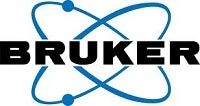Minerals are very important natural components of soil and rock and are of high value to a variety of applications and industries. In order to deduce their formation and origin, modifications are studied. Mineral and soil analysis is also at the core of most exploration as well as routine studies in the petroleum and mining industries. Evidently, gem stones are valuable for the jewelry industry.
Next to XRD and XRF [1], Raman spectroscopy is one of the most commonly used techniques for mineral analysis. Technological advances have led to the development of handheld Raman instruments that are highly flexible and can be deployed in the field.
The BRAVO analyzer from Bruker incorporates a laboratory grade, high performance Raman spectrometer with intuitive software for on-board data evaluation, with the active fluorescence mitigation SSETM [2], in a handheld format.
SSETM-Fluorescence Mitigation and High Sensitivity
As a result of the laser excitation, many minerals emit a strong fluorescence signal which can mask the Raman signature, as illustrated in Figure 1 (red spectrum). Raman signals are successfully extracted from intense fluorescence contributions using the SSETM technique.
This helps to maintain a high level of selectivity and sensitivity. In the example given, the spectrum resulting from kaolinite (blue) match the Raman signature obtained at a benchtop FT-Raman system (1064 nm excitation) very well.
| Keywords |
Instrumentation and Software |
| Raman |
BRAVO |
| Minerals |
OPUS Spectroscopic Software |
| Fluorescence |
Spectral Databases |
.jpg)
Figure 1: Raman spectrum of kaolinite with and without fluorescence mitigation SSETM in comparison to FT-Raman data.
Material Identification
BRAVO is a Raman analyzer dedicated to material identification and verification. A measured Raman spectrum acts as a fingerprint that can be compared to data from an on-board library.
The results is then presented immediately on the touch screen display. The data can then be transferred to a computer for further post data evaluation or reporting.
Databases
The use of comprehensive databases is essential for identification purposes. It is possible to generate libraries based on any existing Raman data, e.g. open source Raman spectra, or from company-specific data from benchtop instruments or the BRAVO itself.
Unmatched Accuracy
For a handheld instrument, the BRAVO spectrometer provides unrivalled wavenumber accuracy. This is important for differentiating between similar materials and for unambiguous identifications (see Figure 2). The BRAVO achieves accuracy values in the range of +/- 1 cm-1, according to performance tests with certified reference samples [3].
.jpg)
Figure 2: Exact band positions are often important for distinguishing slight differences in minerals.
Mineral Classes
The BRAVO can be used to identify various mineral classes including carbonates, gems, oxides, phosphates, sulfates, etc. and also to identify organic minerals, as recently described by Jehlička et al. [4].
Figure 3 shows a variety of Raman spectra obtained with BRAVO from different minerals as an example. Each spectrum has a distinct signature which can be used like a fingerprint for library matching.
.jpg)
Figure 3: Raman spectra of different minerals.
Benefits
- Comprehensive mineral spectrum libraries can be generated
- High performance spectrometer with active fluorescence mitigation SSETM
- Advanced acquisition mode via WiFi/Ethernet using the software suite OPUS [5]
- Unmatched wavenumber accuracy for unambiguous material identification [3]
- Various adapters for optimal measurement conditions available
References
[1] https://www.bruker.com/applications/material-science/mining-minerals.html
[2] Bruker Product Note T29 12/15, Efficient mitigation of fluorescence in Raman spectroscopy using SSETM
[3] Bruker Product Note T30 03/16, Accuracy is crucial: The starting point for a robust transfer of methods
[4] Jehlička et al, J. Raman Spectrosc.(2017), doi: 10.1002/ jrs.5105
[5] Bruker Product Note R34 05/16, Advanced Data Acquisition and Evaluation in Handheld Raman Spectroscopy

This information has been sourced, reviewed and adapted from materials provided by Bruker Optics.
For more information on this source, please visit Bruker Optics.